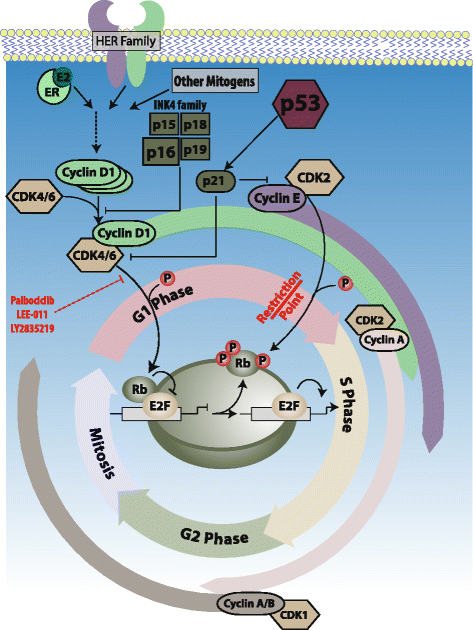Targeting the cyclin-dependent kinases (CDK) 4/6 in estrogen receptor-positive breast cancers
- PMID: 26857361
- PMCID: PMC4746893
- DOI: 10.1186/s13058-015-0661-5
Targeting the cyclin-dependent kinases (CDK) 4/6 in estrogen receptor-positive breast cancers
Abstract
Despite significant advances in early detection and treatment, breast cancer still remains a major cause of morbidity and mortality for women. Our understanding of the molecular heterogeneity of the disease has significantly expanded over the past decade and the role of cell cycle signaling in both breast cancer oncogenesis and anti-estrogen resistance has gained increasing attention. The mammalian cell cycle is driven by a complex interplay between cyclins and their associated cyclin-dependent kinase (CDK) partners, and dysregulation of this process is one of the hallmarks of cancer. Despite this, initial results with broadly acting CDK inhibitors were largely disappointing. However, recent preclinical and phase I/II clinical studies using a novel, oral, reversible CDK4/6 inhibitor, palbociclib (PD-0332991), have validated the role of CDK4/6 as a potential target in estrogen receptor-positive (ER+) breast cancers. This review highlights our current understanding of CDK signaling in both normal and malignant breast tissues, with special attention placed on recent clinical advances in inhibition of CDK4/6 in ER+ disease.
Figures

References
Publication types
MeSH terms
Substances
LinkOut - more resources
Full Text Sources
Other Literature Sources
Medical
Miscellaneous

